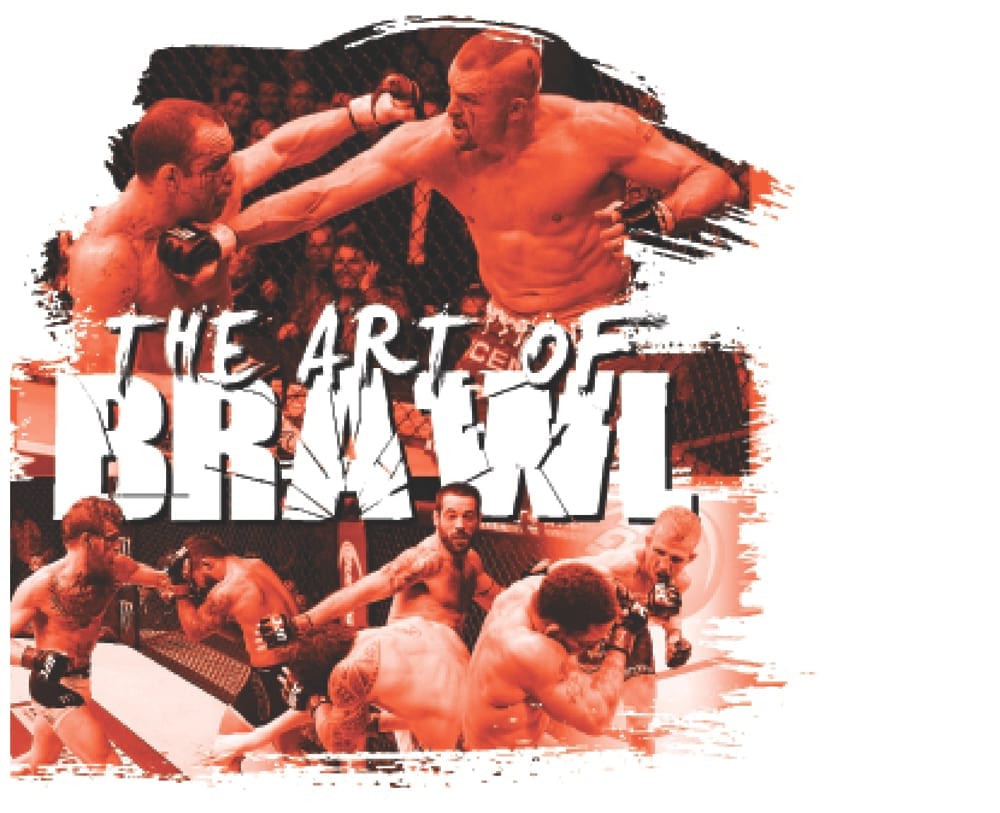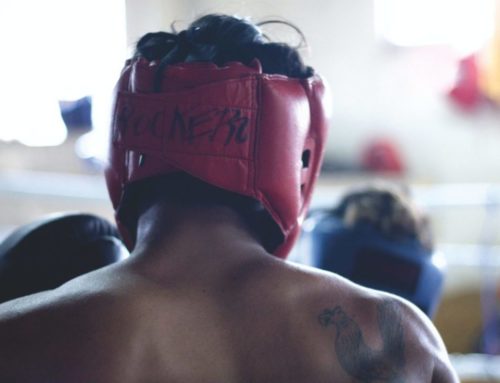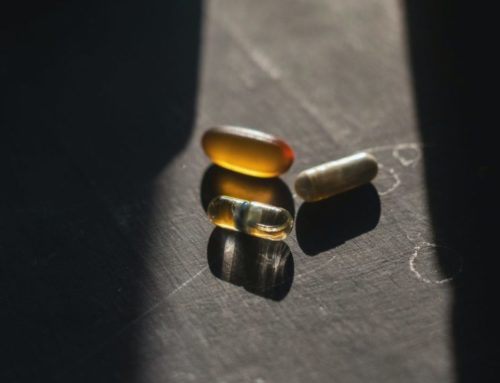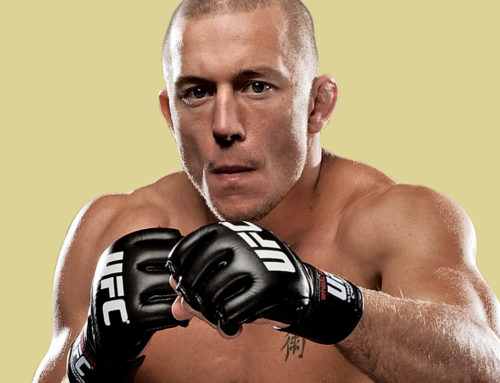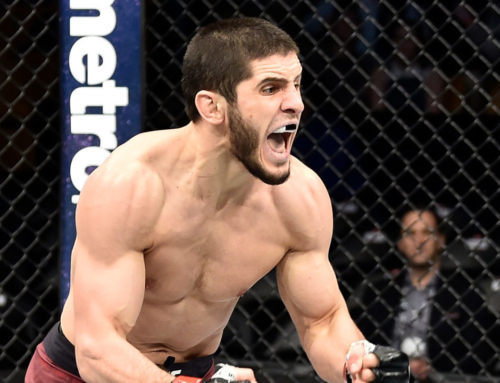By Brad Ward
Rewind to MMA’s beginnings and it was an underground sport that attracted many fans for its no-hold-barred brutality. So many fighters were part-timers and bare-knuckle brawlers. Examples of legitimate, skilled martial artists like Royce Gracie, Jeremy Horn and Frank Shamrock were few and far between.
The levels of skill and technique would grow as the sport transitioned into the new millennium, but it was the brawling style that helped the UFC to get noticed and become a full-blown phenomenon. Famously, company president Dana White maintains The Ultimate Fighter light heavyweight final between Forrest Griffin and Stephan Bonnar was the most important fight in UFC history.
At its core, Griffin vs. Bonnar was simply two guys beating the hell out of each other for 15 minutes – one of the wildest brawls of all-time. But it was thrilling and millions tuned in to see the action unfold. Only a true slugfest could have captured the imagination of a dubious public the way it did. Even the most fluid grappling and impressive athleticism meant nothing to the casual fan. They wanted blood, they got it and a promotion on the brink of collapse was saved.
As MMA’s popularity exploded after that water-cooler moment, the game’s premier savages became the biggest stars of the new post-TUF era. Champions like Wanderlei Silva and Chuck Liddell were extremely skilled in traditional martial arts but still adopted a balls-to-the-wall style, punching and kicking their way to countless highlight-reel moments. It was a style forged in the survival-of-the-toughest environs of those early days.
When Liddell first hit the MMA scene he impressed with an iron chin, deadly hands and a never-say-die attitude, which was exactly what was required for his involvement in some of the best brawls in MMA history, including the second fight of his career. In August 1998 ‘The Iceman’ faced Jose ‘Pele’ Landi-Jons at IVC 6 in what would go down in MMA folklore as one of its most brutal fights. It was a recipe of bare-knuckle strikes, soccer kicks and headbutts over a ferocious 30 minutes. The war ended with the American getting his hand raised.
IVC 6 also saw Silva compete in his sixth pro fight and score a trademark vicious KO on Mike Van Arsdale. For the best part of the following decade, both he and Liddell enjoyed incredible success as the all-action poster boys of the world’s largest promotions before finally meeting in the UFC cage in 2007 to rage their own legendary brawl at UFC 79. It was the last great moment of Liddell’s career as he won a decision as well as ‘Fight of the Year’ honours, after three rounds of mayhem.
Silva too was entering the twilight of his career, but he had a little more juice left in him for a few more unforgettable wars. The pick of the bunch was his 2013 swansong in Japan, where ‘The Axe Murderer’ prevailed over Brian Stann in one of the craziest barnburners in history. Both fighters tasted the canvas repeatedly, technique went out of the window and the crowd went insane.
The evolution
Old-school brawlers would swing punches like they were pitching a baseball, but as MMA athletes’ skills evolved so did aggressive approach. “The brawlers we have in MMA now are more technical fighters. They will take a few shots to throw a couple of jabs and then the big overhand right,” says Marcus Marinelli, head coach at Strong Style MMA where he mentors UFC heavyweight Stipe Miocic. “Today brawlers have good technique. We’ve seen their style evolve over the years and become more skilled.”
Blood-fuelled, rock-em-sock-em wars are still what many fans tune in to see, but contemporary brawlers like Matt Brown, Justin Gaethje and Thomas Almeida are highly-skilled mixed martial artists who have adapted their tactics to combine technique and aggression to fit the modern-day mixed martial arts mould.
“If you’re a brawler and you have someone in front of you with a really stiff jab, good angles and footwork, and he gets off first using his hands and doubling up on that jab, throwing it hard, then the brawler will be stuck not knowing what to do,” adds Marinelli. “Now brawling has a little more technique behind it than what it had 10 years ago. They have learnt to throw technical strikes and follow up with their brawling-type strikes. It’s way more controlled these days.”
Some people maintain it’s a mindless art, but brawling is often not an irrational or hail-Mary approach. Just look at Conor McGregor’s performance against Chad Mendes. Though the Irishman flexed some wonderful technical striking, he was also clearly willing to stand in the pocket and trade some shots because he knew Mendes took the fight on two weeks’ notice and he wouldn’t be able to match his output.
It was thrilling to see ‘The Notorious’ take shots from a one-punch knockout fighter, smile and keep coming forward. There’s little doubt that it chipped away at the American’s confidence. ‘Money’ hit him with his best shots, but McGregor took them and fired away with his own punishing salvos. His game plan was a representation of his brash personality and demonstrated his balanced skill-set of traditional martial arts, aggression and knockout power.
“Conor McGregor is very aggressive but technical at the same time,” says Duke Roufus, world-class striking coach and former kickboxer. “But I see him cutting different angles. I grew up in traditional martial arts and so did he, so I see that he does a very good job of blending traditional martial arts with modern boxing and kickboxing and with the application of Thai boxing too.”
Straight outta college
Perhaps one reason for this evolution of the brawler to a technically-sound, highly-offensive fighter is that top MMA gyms are recruiting talented athletes from a much younger age. Their fighting skills can be honed and aggression controlled to build them into a model of fighting effectiveness. We’re seeing all the ingredients for a brawler, but with their edges refined and sharpened.
“I actually coached Dan Bobish for UFC 14 so I’ve been around it and watched the sport for years,” says Marinelli. “I’ve watched a change because we now recruit better athletes who know and understand how to generate power in their punches.
“And if you can put controlled aggression behind really strong technique and footwork, as well as cutting good angles, that person will be entertaining and hard to beat. Traditional brawlers usually throw things like big overhand rights and lunging semi-hooks, which can be dangerous. But these athletes ‘brawling’ today don’t commit like that.”
Another prime example would be UFC bantamweight champion TJ Dillashaw. He was recruited by Team Alpha Male founder Urijah Faber after he’d graduate from college. Dillashaw had a reputation for aggression and shouting for more during his sparring sessions when he was bloodied and battered, which earned him the nickname ‘Lieutenant Dan’ – the crazy platoon leader from Forrest Gump.
That recklessness was tempered and the aggression was capitalised on. The former TUF runner-up was developed into what is now one of the most devastating counter fighters in mixed martial arts. He draws opponents in before unleashing that trademark fury. Though, like all good natural brawlers, he still gets the occasional inclination to bite down on his mouthpiece and exchange punches in the pocket.
Fighting to finish
Roufus, meanwhile, also believes changes to the Unified Rules over the last decade or so have also had an impact on the evolution of the MMA brawler. The Roufusport head coach suggests limiting the use of grease between rounds has encouraged fighters to curtail their wild ways.
“There’s something that changed everything in striking and that’s no Vaseline or very little Vaseline. When I was in my striking days we’d apply as much as possible between every round,” he admits. “These days there’s only very little, so you catch a lot more punches due to the lack of lubrication on the face – whereas a lot of punches used to slip and glide.
“Today that leather catches a lot easier so you can’t take the beating that you might have done years ago. There used to be so much Vaseline going on before. Plus, guys also want to prolong their careers by improving their game, tightening up and ultimately earning more money.”
But despite the dangers of an aptitude for aggression, it’s an intrinsic part of many top-class MMA athletes’ games and it has brought them success. The warrior spirit is alive in fan-favourites like UFC welterweight contender Matt Brown. While his successes are grounded in high-level technique, his greatest victories have come by prevailing through some serious wars of attrition.
“It comes natural to me to fight aggressive,” he says. “That’s how I live in my daily life, I’m aggressive in everything I do. I always push everything. When I look back on my life, everything I’ve done I’ve taken it to the extreme and that carries over into my fighting and my training. It’s just the type of person I am.
He adds: “It comes down to my motivations in the sport and what I’m doing things for and why I’m in the sport to start with. I’m not out their to win on points and squeeze out a victory, I want to find out who’s better, I want to push myself and test myself, which is what we all want to do but I take it to the extreme.”
‘The Immortal’s approach has saw him scoop four performance bonuses in his last six fights, so clearly it pays to be aggressive and exciting. UFC president Dana White has a soft spot for guys who go in the cage and throw down. And in reality that mentality can be the difference from getting cut from the UFC roster or not. White’s post-fight mantra of “never leave it in the hands of the judges” is a statement fighters like Brown live by.
The art of brawling will never die but its evolution means the style didn’t come out swinging into this decade, but it did arrive with full force. While the wild slobberknockers of the past are largely confined to the history books – today’s technical aggressors are here to fill the void.
*** This feature originally appeared in the January 2016 issue of Fighters Only ***

